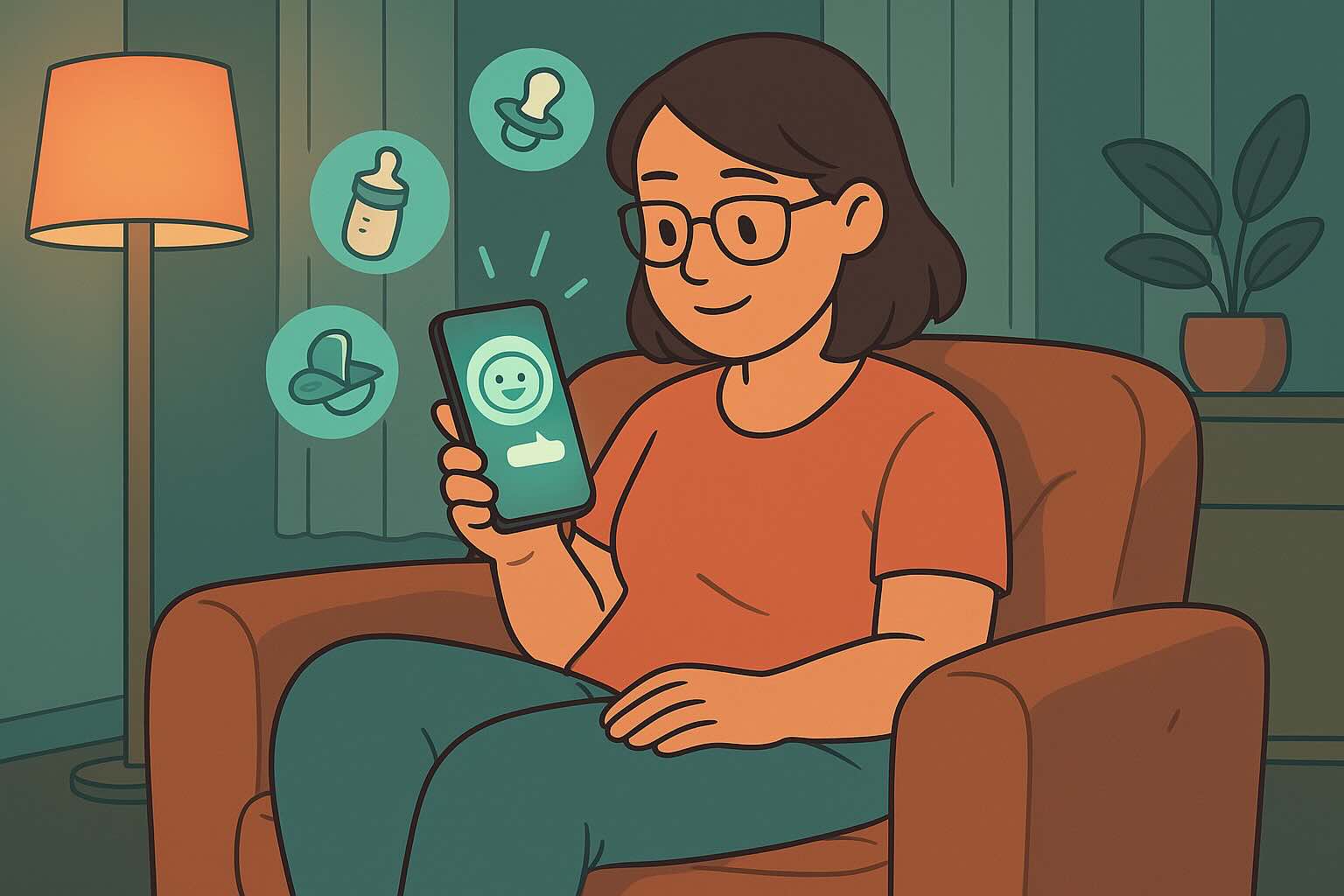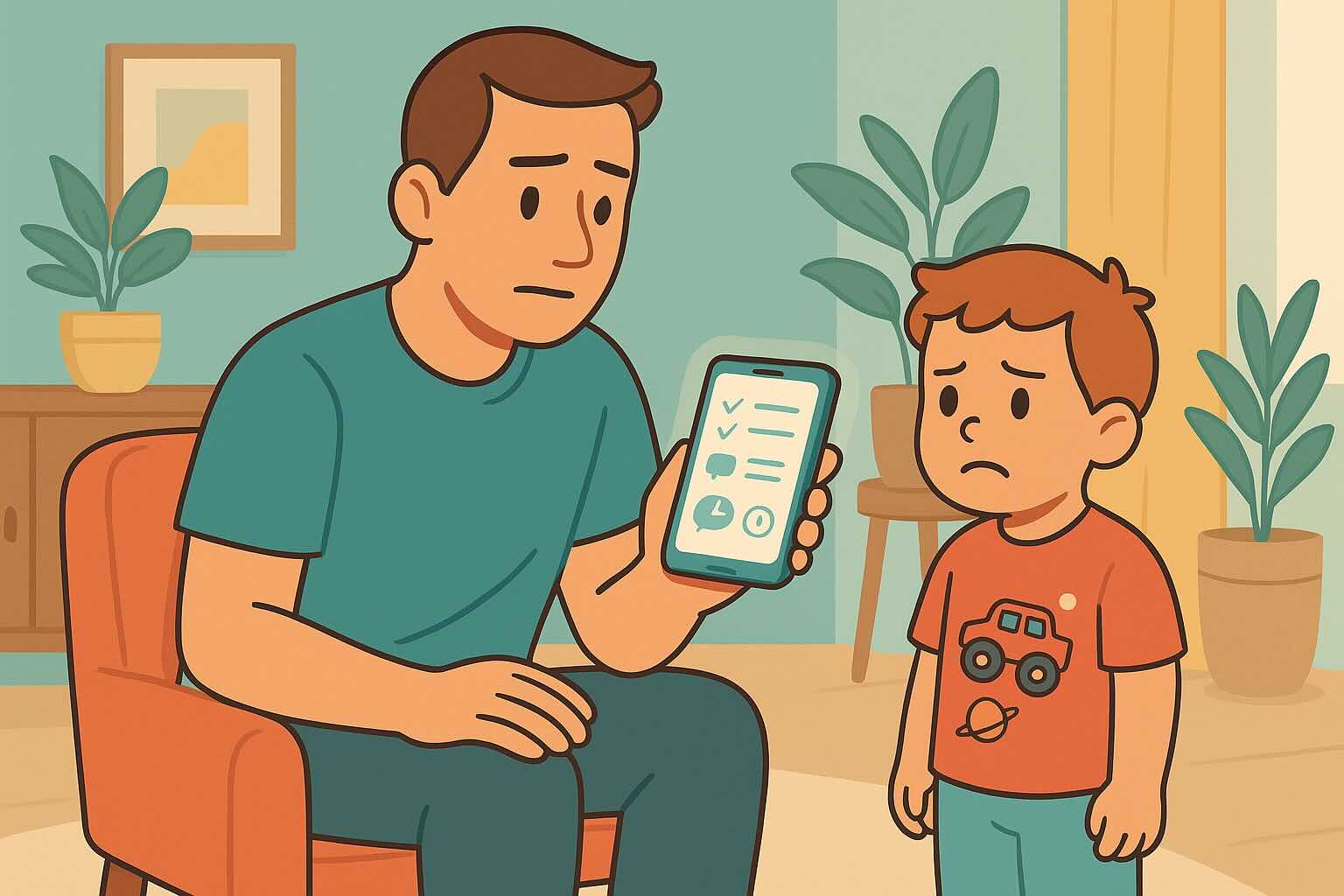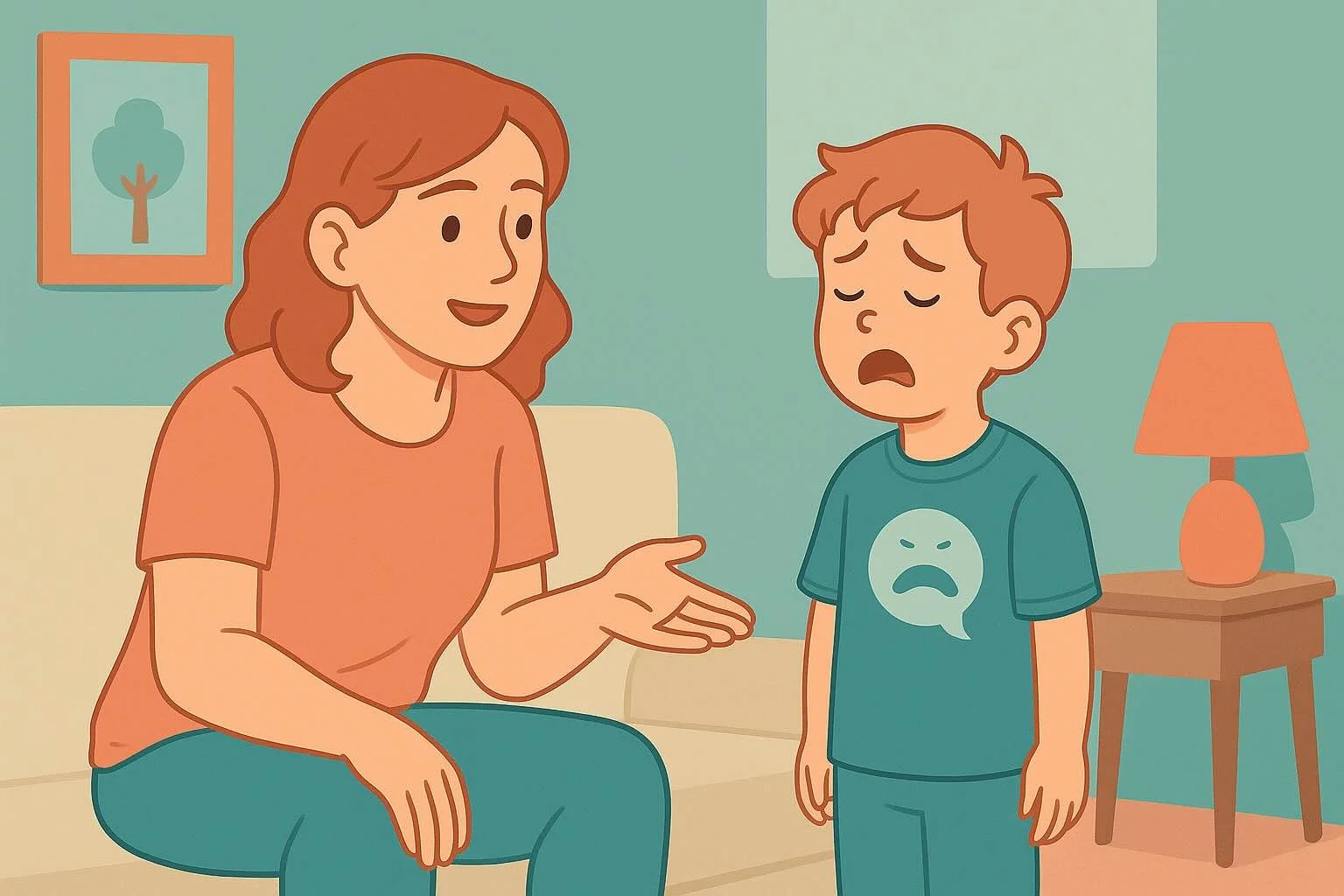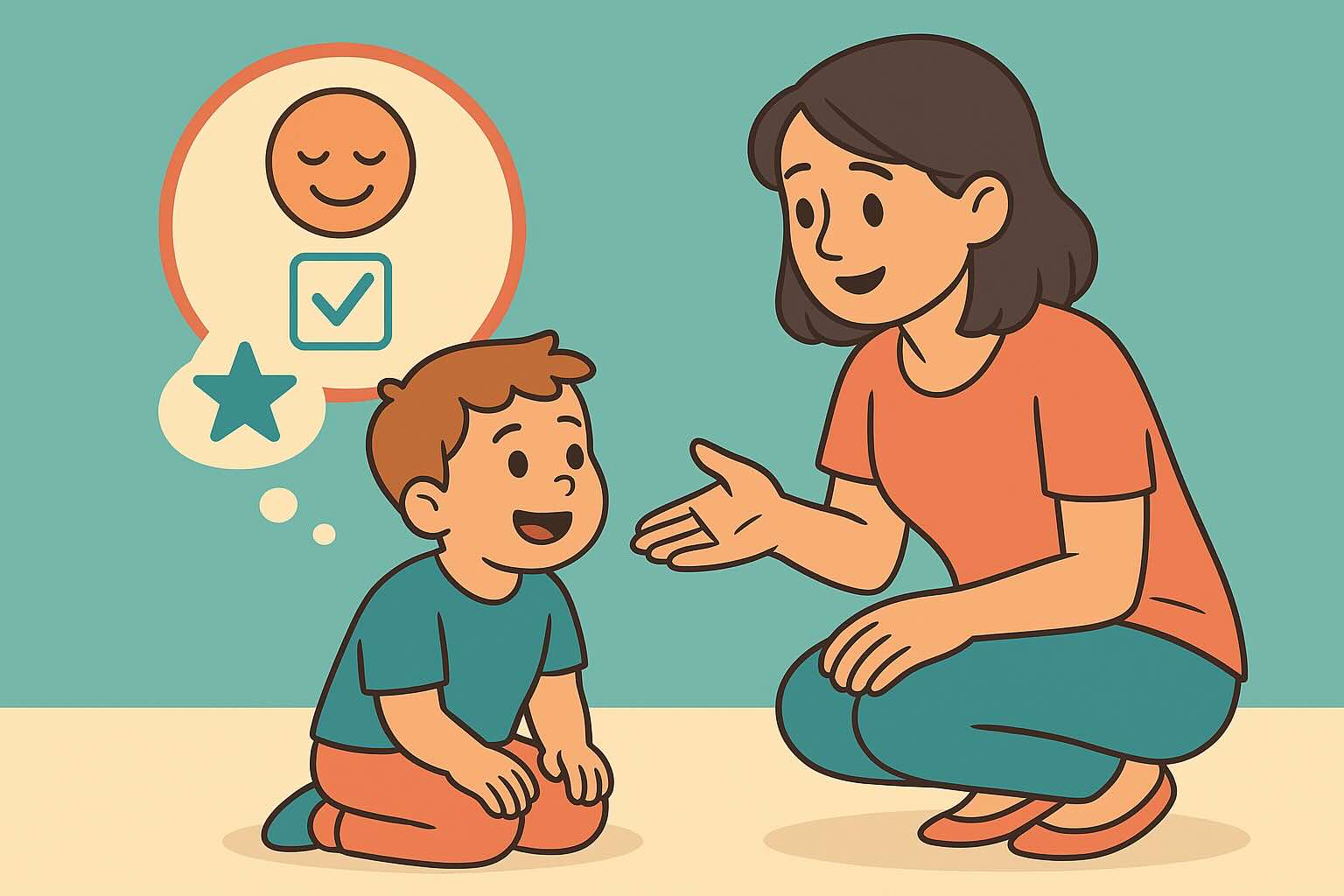How to Stop 3 Year Old Whining: 6 Techniques That Work in 1-2 Weeks


If your 3-year-old's whining has become the soundtrack to your daily life, you're experiencing one of the most common parenting challenges of this age. Research shows that 98% of 3-year-olds go through significant whining phases, and while some is developmentally normal, it doesn't have to dominate your family interactions.
The truth about 3-year-old whining: they're not trying to manipulate you (yet). At this age, whining is their attempt to communicate big feelings with limited vocabulary and underdeveloped emotional regulation skills. They've discovered that whining gets bigger reactions than regular talking, but they haven't yet learned strategic manipulation.
This comprehensive guide provides evidence-based, age-appropriate strategies specifically designed for 3-year-olds, with realistic timelines and simple scripts that work for 95% of families within 4-6 weeks. For broader whining strategies across ages, see our complete whining guide, and for prevention techniques, check our whining prevention strategies.
What You'll Learn in This Guide
- Why 3-Year-Olds Whine - The unique developmental factors that make whining peak at age 3
- The 3-C Method for Threes - Calm, Composed, Consistent responses adapted for this age
- Age-Appropriate Scripts - Simple language that 3-year-olds understand and can follow
- Prevention Strategies - How to reduce whining triggers specific to 3-year-olds
- Handling Meltdowns - What to do when redirecting whining leads to emotional outbursts
- Realistic Timeline - Week-by-week expectations for reducing whining behavior
- Common Scenarios - Specific responses for typical 3-year-old whining situations
- Building Communication Skills - Teaching better expression methods at this developmental stage
Estimated reading time: 14 minutes
Understanding 3-Year-Old Whining: The Developmental Perspective
Why Whining Peaks at Age 3
The perfect storm of development:
Emotional development:
- Much bigger emotions than at age 2, but minimal emotional regulation skills
- Increased awareness of wants and preferences without understanding limitations
- Beginning to experience complex emotions like disappointment, frustration, and jealousy
- Seeking more autonomy while still needing significant support
Cognitive development:
- Understanding cause and effect: "If I sound upset, adults react"
- Testing boundaries more systematically than younger children
- Developing memory of what worked before in similar situations
- Limited problem-solving skills for handling disappointment
Language development:
- Vocabulary growing rapidly but still lacking emotional expression words
- Understanding much more than they can articulate
- Frustrated by the gap between what they want to communicate and their ability to express it
- Learning that tone and volume can convey intensity of feeling
Social development:
- Increased awareness of family dynamics and their place in them
- Beginning to notice that different communication styles get different responses
- Testing whether they can influence adult decisions through emotional expression
- Seeking more attention and connection while asserting independence
Normal vs. Problematic Whining at Age 3
Normal developmental whining:
- Occurs during specific triggers (hunger, tiredness, transitions, disappointment)
- Lasts 2-5 minutes and child can be distracted or redirected
- Happens 1-3 times per day during challenging moments
- Child still uses regular voice for basic needs and happy interactions
- Responds to calm, patient redirection after a few attempts
Whining that needs intervention:
- Becomes the primary communication method for most requests
- Occurs 5+ times daily for routine interactions
- Child's regular voice rarely appears even for basic needs
- Escalates in volume and intensity when not immediately addressed
- Continues even when basic needs (food, rest, comfort) are met
- Replaces normal speech for most family interactions
The 3-Year-Old Brain and Whining
What's happening neurologically:
- Prefrontal cortex: Still very underdeveloped, making emotional regulation extremely difficult
- Limbic system: Highly active, creating intense emotional responses to minor disappointments
- Language centers: Developing rapidly but still limited in emotional vocabulary
- Stress response: Easily triggered by changes, limits, or unmet wants
Why traditional advice doesn't work:
- "Use your words" - They don't have the words yet
- "Stop whining" - They don't have the self-control to stop without support
- "Big boys/girls don't whine" - Shame-based approaches increase emotional dysregulation
- Ignoring completely - Creates more anxiety and escalation
The 3-C Method Adapted for 3-Year-Olds
The foundational approach of Calm, Composed, and Consistent works beautifully for 3-year-olds when adapted for their developmental needs.
C #1: Stay Calm (Your Emotional Regulation Teaches Theirs)
Why this is crucial for 3-year-olds: Your 3-year-old doesn't yet have the brain development to regulate their own emotions. They literally borrow your calm nervous system to help regulate theirs. When you stay calm during whining, you're providing the co-regulation they need to learn self-regulation.
Practical strategies for staying calm:
- Preparation mantras: "This is normal development" or "I am teaching important life skills"
- Physical techniques: Take three deep breaths, lower your shoulders, soften your voice
- Perspective reminders: "This phase will pass" or "Every response is teaching them something"
- Self-compassion: "This is hard work, and I'm doing my best"
Signs you're staying calm effectively:
- Your voice naturally lowers when you hear whining
- You can think clearly about what your child needs
- You don't feel urgent pressure to "make it stop"
- Your child begins to mirror your calm energy
C #2: Stay Composed (Simple, Clear Responses)
Why 3-year-olds need composed responses: Big emotional reactions from you (positive or negative) overwhelm their developing nervous system and reinforce whining behavior. They need predictable, measured responses that help them feel safe while learning new patterns.
What composed looks like for 3-year-olds:
- Use simple, consistent language every time
- Keep your tone neutral and kind rather than frustrated or overly excited
- Make your body language calm and approachable
- Don't rush to fix or stop the whining immediately
Avoid these reactive responses:
- "I can't understand you when you whine!" (confusing and not helpful)
- "Stop that right now!" (too demanding for their developmental stage)
- Immediately giving in to stop the whining (reinforces the behavior)
- Matching their emotional intensity with your own frustration
C #3: Stay Consistent (Predictable Responses Build Security)
Why consistency matters more for 3-year-olds: Three-year-olds learn through repetition and routine. When your responses to whining are consistent, they can predict what will happen and feel secure while learning new communication patterns.
Consistency requirements for this age:
- Use identical language every single time whining occurs
- Apply the same approach whether you're tired, stressed, or in public
- Ensure all caregivers use the same method and language
- Don't make exceptions "just this once" when you're overwhelmed
Building consistency:
- Write down your chosen response and practice it
- Share the approach with all family members and caregivers
- Post reminders in key locations if needed
- Review and adjust weekly but maintain daily consistency
Step-by-Step Method to Stop 3-Year-Old Whining
Phase 1: Teaching the Difference (During Calm Moments)
Before addressing whining in crisis moments, teach the concept when your child is calm and receptive.
Step 1: Introduce the Concept Playfully "I want to teach you about two different voices. One is your whining voice, and one is your big kid voice. Let me show you!"
Step 2: Demonstrate Both Voices Model whining voice: "I want a snaaaaaack" (exaggerated but not mocking) Model regular voice: "May I please have a snack?" "Did you hear how different those sounded?"
Step 3: Let Them Practice "Now you try! Show me your whining voice... now show me your big kid voice! Wow, you can make both sounds!"
Step 4: Explain Your Preference "I love your big kid voice! That's the voice that helps me understand what you need. Your whining voice is harder for me to help with."
Step 5: Set the Expectation "When you use your whining voice, I'm going to remind you to try your big kid voice. It might take practice, and that's okay!"
Phase 2: In-the-Moment Response Strategy
When whining occurs, use this consistent, age-appropriate approach:
Step 1: Acknowledge Calmly "I hear your whining voice. Can you hear it too?"
Step 2: Request Big Kid Voice "Show me your big kid voice to tell me what you need."
Step 3: Provide Specific Modeling (If Needed) "In your big kid voice, say 'May I please have some water?'"
Step 4: Wait and Encourage "You can do it. I'm listening for your big kid voice."
Step 5: Offer Support "Let me help you. Say it with me: 'May I please...'"
Step 6: Set Gentle Boundary If whining continues: "When you're ready to use your big kid voice, I'm here to listen. I'm going to wait right here."
Phase 3: Age-Appropriate Scripts for Common Scenarios
Scenario 1: Basic Need Whining Child whines: "I want juuuuice"
Your response: "I hear your whining voice. Show me your big kid voice. Say 'May I please have juice?'"
Scenario 2: Activity Transition Whining Child whines: "I don't want to leave the paaaaaark"
Your response: "I hear your whining voice. You're sad about leaving. In your big kid voice, say 'I'm sad we have to go.'"
Scenario 3: Attention-Seeking Whining Child whines: "Play with meeeee"
Your response: "I hear your whining voice. Use your big kid voice to say 'Will you play with me please?'"
Scenario 4: Bedtime/Routine Whining Child whines: "I don't want to brush my teeeeeth"
Your response: "I hear your whining voice. You don't like brushing teeth. Use your big kid voice to say 'I don't want to brush my teeth, but I will.'"
Age-Specific Strategies for 3-Year-Olds
Developmental Considerations
Shorter attention spans:
- Keep interactions brief (30-60 seconds)
- Don't expect long conversations about communication
- Use immediate practice rather than delayed teaching
- Repeat the lesson many times in small doses
Limited emotional vocabulary:
- Provide the exact words they can use
- Focus on basic emotions: happy, sad, mad, scared
- Use picture books about feelings during calm time
- Connect physical sensations to emotions: "tight tummy might mean worried"
High need for connection:
- Whining often indicates need for attention or comfort
- Provide positive attention immediately when they use regular voice
- Increase overall connection time during non-whining moments
- Use physical comfort along with verbal guidance
Concrete thinking:
- Use simple, literal language rather than abstract concepts
- Show them what you mean through demonstration
- Use visual cues when possible
- Connect new learning to familiar concepts
Building Emotional Regulation Skills
Teaching calm-down strategies:
- Deep breathing: "Let's breathe like a sleepy bear" (slow, deep breaths)
- Counting: "Let's count to five while we calm down"
- Physical release: "Stomp your feet three times, then use your big kid voice"
- Comfort items: Allow transitional objects during learning period
Recognizing emotional states:
- Body awareness: "Notice how your tummy feels when you're frustrated"
- Facial recognition: "Your face looks sad. Are you feeling sad inside?"
- Emotion coaching: "You're having big mad feelings. Mad feelings are okay."
- Validation: "It makes sense to feel disappointed when you can't have what you want"
Prevention Strategies Specific to 3-Year-Olds
Environmental modifications:
- Routine predictability: Clear, consistent daily schedules reduce anxiety-driven whining
- Transition warnings: "In five minutes, we'll clean up toys"
- Choice within limits: "Would you like to walk to the car or hop like a bunny?"
- Proactive attention: 10-15 minutes of focused one-on-one time daily
Meeting basic needs proactively:
- Regular meals and snacks: Hunger is a major whining trigger at this age
- Adequate sleep: Overtired 3-year-olds whine significantly more
- Physical activity: Daily movement reduces overall emotional dysregulation
- Sensory needs: Some children need quiet time, others need more stimulation
Communication skill building:
- Read books about feelings during calm moments
- Practice "asking nicely" during play
- Model clear communication in your own interactions
- Celebrate good communication: "I love how you asked with your big kid voice!"
Handling Meltdowns and Emotional Outbursts
When Redirecting Whining Triggers Meltdowns
Why this happens: Three-year-olds often escalate to meltdowns when their communication attempts (whining) don't get the expected response. This is normal and temporary as they learn new patterns.
Your response during meltdowns:
- Stay physically close and emotionally calm
- Acknowledge their feelings: "You're having big feelings about this"
- Maintain the boundary: "I still need to hear your big kid voice when you're ready"
- Provide comfort: "I'm right here with you while you have these big feelings"
- Wait it out: Don't try to reason or teach during the emotional storm
After the meltdown:
- Reconnect: Offer physical comfort and reassurance
- Brief reflection: "That was hard. You felt really frustrated."
- Practice: "Let's practice asking with your big kid voice now"
- Move forward: Don't dwell on the meltdown or make them feel bad about it
Supporting Emotional Recovery
Immediate comfort:
- Physical presence: Stay close, offer hugs if wanted
- Soothing voice: Speak slowly and softly
- Validation: "Big feelings are hard. You're safe with me."
- Patience: Allow time for their nervous system to settle
Building resilience:
- Normalize emotions: "Everyone has big feelings sometimes"
- Celebrate recovery: "Look how you calmed your body down"
- Practice coping: "Next time you feel frustrated, what could you do?"
- Connection: "I love you even when you have big feelings"
Realistic Timeline for 3-Year-Olds
Week 1-2: Learning Phase
What to expect:
- Whining may initially increase as they test the new system
- Frequent meltdowns when communication expectations change
- Need for lots of modeling and reminders
- Inconsistent success with using "big kid voice"
- High need for patience and repetition
Your goals:
- Practice voice differences during calm moments daily
- Use consistent language every single time
- Stay calm during meltdowns and increased whining
- Provide lots of comfort and support during the transition
- Begin tracking patterns and triggers
Success markers:
- Child can demonstrate the difference between voices when calm
- Occasional success with using regular voice when prompted
- Beginning to recognize whining voice when you point it out
Week 3-4: Recognition Phase
What to expect:
- Some self-awareness emerging: "I'm using my whining voice"
- Faster transitions from whining to regular voice when prompted
- Occasional self-correction without prompting
- Decreased intensity and duration of meltdowns
- More cooperation with the process
Your goals:
- Continue consistent responses while reducing words needed
- Celebrate all improvements enthusiastically
- Maintain patience during setbacks and regression
- Address specific trigger times (hunger, tiredness)
- Begin expecting slight delays before prompting
Success markers:
- Child sometimes catches themselves whining
- Regular voice appears more quickly when requested
- Fewer meltdowns overall, shorter duration when they occur
Week 5-6: Integration Phase
What to expect:
- 60-80% reduction in whining frequency
- Child uses regular voice as primary communication method
- Self-correction becoming more common
- Better emotional regulation overall
- Family stress levels significantly decreased
Your goals:
- Begin brief prompts: "Big kid voice, please"
- Continue positive reinforcement for good communication
- Start expecting more independent self-correction
- Address any remaining challenging situations
- Plan for handling temporary setbacks
Success markers:
- Regular voice is now the default for most interactions
- Child can usually self-correct when gently reminded
- Whining episodes resolve quickly when they occur
Week 7-8+: Mastery Phase
What to expect:
- Whining becomes occasional rather than daily
- Strong preference for regular voice communication
- Good emotional regulation skills for age
- Improved family communication patterns overall
- Confidence in handling future developmental challenges
Your goals:
- Maintain consistency during any temporary regressions
- Continue building emotional vocabulary and regulation skills
- Model healthy communication in all family interactions
- Celebrate the transformation and build on success
- Prepare for next developmental phases
Troubleshooting Common Challenges
"But I Can't Use My Big Kid Voice!"
When 3-year-olds claim inability: This is often genuine - they may be too emotionally dysregulated to access different vocal patterns.
Your response: "It's hard when you have big feelings. Let me help you. Let's take three deep breaths together, then try your big kid voice."
Support strategies:
- Offer physical comfort first
- Break down the request into smaller parts
- Model the exact words and tone they can copy
- Practice during easier, calmer moments
- Use play and games to build the skill
Whining During Public Outings
Prevention:
- Practice at home first until skill is solid
- Prepare with snacks, activities, and clear expectations
- Plan shorter outings during the learning phase
- Bring comfort items if needed
In-the-moment response: Use the same calm approach as at home, possibly moving to a quieter area if needed. Consistency in public teaches them that the rules don't change based on location.
Regression During Stress or Changes
Common triggers for regression:
- New baby in family
- Starting preschool
- Moving homes
- Changes in routine
- Family stress or conflict
Your approach:
- Expect temporary increases in whining during transitions
- Provide extra emotional support and connection
- Return to more frequent practice of voice differences
- Be patient with the learning process
- Maintain consistency while offering additional comfort
When Partners/Caregivers Aren't Consistent
Building team approach:
- Share this guide with all caregivers
- Practice the scripts together
- Agree on identical language and responses
- Check in weekly about consistency
- Address disagreements about approach privately
Handling inconsistency: If one caregiver isn't on board, focus on your own consistency. Children can learn that different adults have different expectations, though progress will be slower.
Building Long-Term Communication Skills
Teaching Emotional Vocabulary
Age-appropriate feeling words for 3-year-olds:
- Basic emotions: happy, sad, mad, scared, excited, tired
- Physical sensations: hungry, thirsty, hot, cold, hurts
- Social emotions: lonely, worried, shy, proud
- Intensity words: little bit, medium, really big
Daily practice opportunities:
- During book reading: "How do you think this character feels?"
- Observing others: "Your sister looks frustrated about her puzzle"
- Describing your own emotions: "I feel happy when we play together"
- Validating their emotions: "You're feeling disappointed that we have to leave"
Problem-Solving Skills Development
Simple problem-solving for 3-year-olds:
- Two choices: "Would you like to ask for help or try once more by yourself?"
- Basic cause and effect: "When you use your whining voice, it's hard for me to help"
- Simple solutions: "When you feel frustrated, you can take deep breaths or ask for help"
- Practice during play: Role-play different scenarios with dolls or toys
Building Resilience and Emotional Tolerance
Age-appropriate resilience building:
- Allow minor disappointments: Don't rescue from every small frustration
- Celebrate emotional recovery: "Look how you handled that disappointment!"
- Teach coping strategies: Deep breathing, counting, asking for hugs
- Model resilience: Show them how you handle your own disappointments
When to Seek Additional Support
Signs That Professional Help Might Be Beneficial
- Extreme intensity: Whining accompanied by aggressive behaviors or self-harm
- No improvement: After 8-10 weeks of consistent implementation with no progress
- Developmental concerns: Significant delays in language or emotional development
- Family impact: Whining severely affecting family functioning or relationships
- Other symptoms: Anxiety, depression, or behavioral concerns beyond whining
- Multiple settings: Problems reported at daycare, with other caregivers, or in all environments
Types of Support Available
Pediatric consultation: Rule out medical issues affecting communication or behavior Speech-language pathology: Address communication development and emotional expression Child psychology: Support for emotional regulation and behavioral patterns Family therapy: Help with family dynamics and communication patterns Early intervention services: Comprehensive support for developmental concerns
Your 4-Week Quick-Start Action Plan
Week 1: Foundation Building
- Day 1-2: Practice voice differences during calm moments
- Day 3-4: Begin using consistent response to whining
- Day 5-7: Focus on staying calm during initial resistance and meltdowns
- Daily practice: 5-10 minutes of "voice practice" during play time
Week 2: Consistency Development
- Continue: Same response every single time whining occurs
- Add: Specific modeling of desired words and tone
- Focus: Supporting them through meltdowns without giving in
- Track: Patterns of when whining occurs most frequently
Week 3: Skill Building
- Shorten responses: Move to briefer prompts as they learn
- Celebrate success: Lots of positive attention for big kid voice
- Address triggers: Work on preventing whining during identified trigger times
- Practice: Continue daily voice practice during calm moments
Week 4: Independence Building
- Expect more: Begin waiting a moment before prompting
- Support self-correction: "I think you know what to do"
- Maintain consistency: Don't relax standards during good days
- Plan ahead: Prepare for handling challenging situations
Key Takeaways: Your 3-Year-Old Whining Toolkit
- ✅ Some whining is normal at age 3 due to developmental factors, but it shouldn't dominate communication
- ✅ The 3-C method works when adapted for 3-year-old developmental needs
- ✅ Teaching voice differences during calm moments is crucial before expecting in-the-moment success
- ✅ Your calm emotional regulation literally teaches them to regulate their own emotions
- ✅ Consistency is more important than perfection - use the same response every time
- ✅ Meltdowns are normal when changing communication patterns - stay calm and supportive
- ✅ 4-6 weeks of patient consistency typically brings significant improvement
- ✅ Focus on connection and comfort while maintaining clear boundaries about communication
- ✅ Address basic needs proactively - hunger, tiredness, and overstimulation trigger whining
- ✅ Build emotional vocabulary gradually with simple, age-appropriate feeling words
- ✅ Celebrate all improvements to reinforce positive communication patterns
- ✅ Professional support is available if needed after consistent implementation
Remember: You're not just stopping whining - you're building the foundation for a lifetime of clear, honest communication. The patience and consistency you show now teaches your 3-year-old that their feelings matter, that they can communicate effectively, and that you're a safe person to share their emotional experiences with.
The communication skills you're teaching now will serve them through preschool, elementary school, and beyond. When other children are still struggling to express their needs clearly, your child will have the confidence and ability to communicate effectively in all areas of their life.
This approach is based on current child development research and proven behavioral strategies. Individual results may vary based on child temperament, family consistency, and implementation quality. For broader behavioral support, consider our guides on building cooperation without rewards and connection before correction approaches. Consult with pediatric professionals if concerns persist or if underlying developmental issues are suspected.
24/7 AI Parenting Assistant
Get instant, personalized advice with expert-curated parenting knowledge. Chat with your AI coach anytime, anywhere.

Challenging Moments Support
Access step-by-step parenting strategies, quick tips, and age-specific guidance for difficult situations when you need it most.

Complete Whining Response Scripts
Calm, effective responses to all types of whining behavior in children ages 3-7.
Frequently Asked Questions
Need personalized support?
RootWise's AI coach can provide tailored strategies for your specific situation, available 24/7 when you need it most.
Learn More About AI Coaching →



